You’re here looking for a Rugen Island travel guide. You want things to do, places to explore, local flavors to sample, and tips to make your journey smooth. Maybe you’ve heard about its chalk cliffs or scenic beaches. Perhaps the promise of tranquil villages and historical sights lures you. This post aims to answer all of these questions.
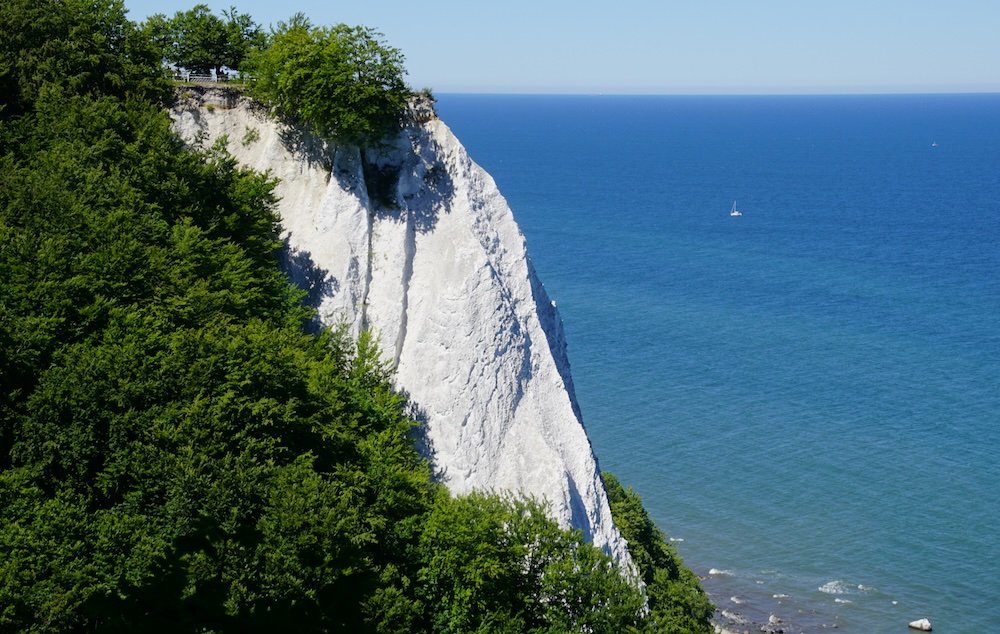
But planning a trip to Rugen Island can raise questions. Which towns are must-sees? How do you navigate from one picturesque village to the next? And where do you find the best fresh bread or local fish dishes? Plus, you might wonder about budget-friendly lodgings or how to avoid peak-season chaos. We’ll tackle those concerns here.
Our Travel Video From Rugen Island, Germany on Samuel and Audrey YouTube Channel: Nomadic Samuel + That Backpacker hosting
Why Rugen Island?
If you’re a first-time visitor, a curious traveler, or even a returning fan, this travel guide is for you. Families seeking calm beaches, couples chasing romantic sunsets, or solo explorers craving nature and history all find something special here. Rugen Island offers variety: chalk cliff hikes, coastal heritage, historic rail rides, and more. We’ll show you how to match your style with the island’s diverse highlights.
Our Travel Video From A German Festival On Rugen Island via Samuel and Audrey YouTube Channel: Hosted by That Backpacker + Nomadic Samuel
So let’s begin this Rugen Island travel guide by highlighting the top spots, best eats, practical tours, lodging tips, day trip ideas, and ways to get around. You’ll soon understand why this German gem draws travelers with its tranquil vibe, natural splendor, and cozy rural traditions.
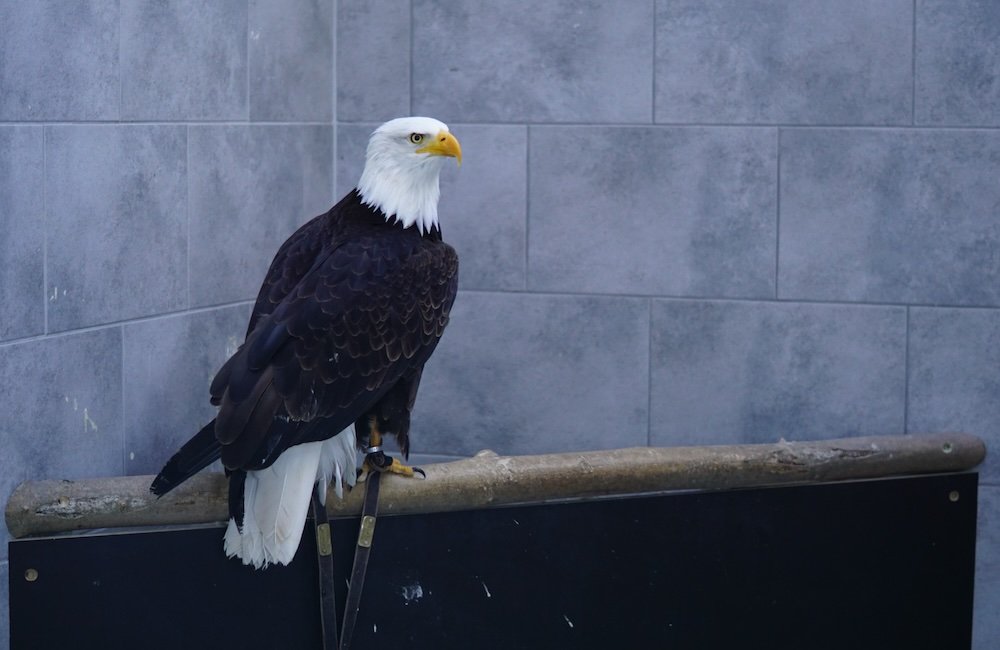
Top 10 Things To Do on Rugen Island, Germany For Visitors
Below is our curated list of ten distinct experiences.
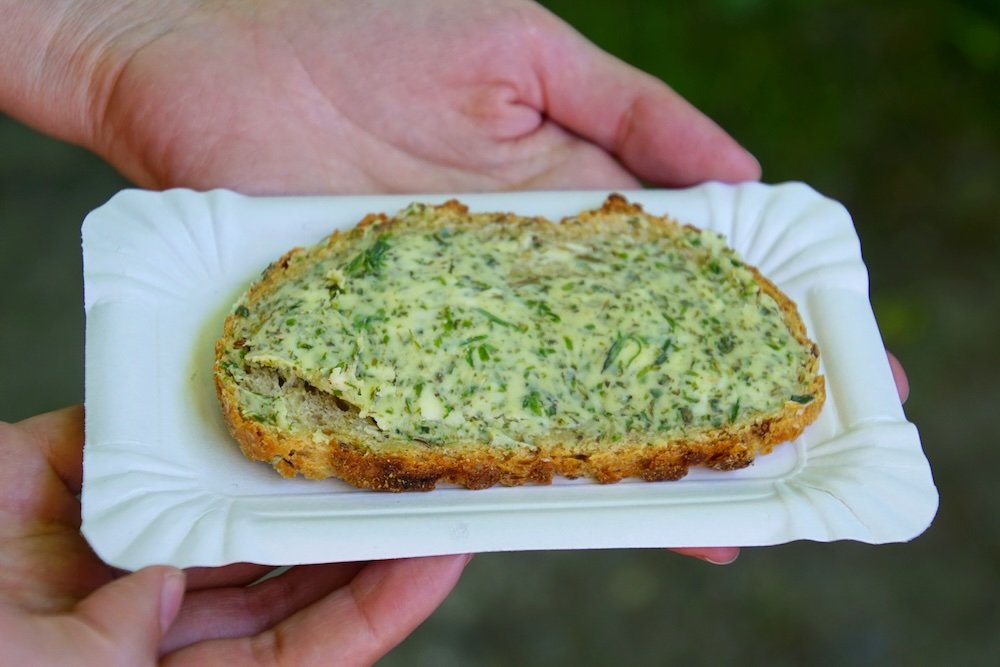
1) Visit Göhren for Fresh German Bread
Göhren is a charming seaside town on Rugen’s southeastern tip, known for its wide beaches and friendly ambiance. Among its many highlights is sampling freshly made German bread, often served warm, topped with butter and fragrant herbs. Strolling the local bakery district in the morning, the aroma of yeast and crust hits you from blocks away. Locals swear by the region’s flour quality and time-honored baking methods. Vendors might invite you to watch dough being kneaded and shaped, creating a small, cozy spectacle. Tasting that first bite—crunchy crust yielding to a tender crumb—cements the comforting memory of Göhren’s bakery culture.
- Arrive before 9 a.m. for prime bread selections.
- Some bakeries sell out by midday, especially on weekends.
- Pair your bread with local jam or honey for a sweeter twist.
Tip: Ask about their special weekend loaves—some shops do limited-edition flavors only on Saturdays.
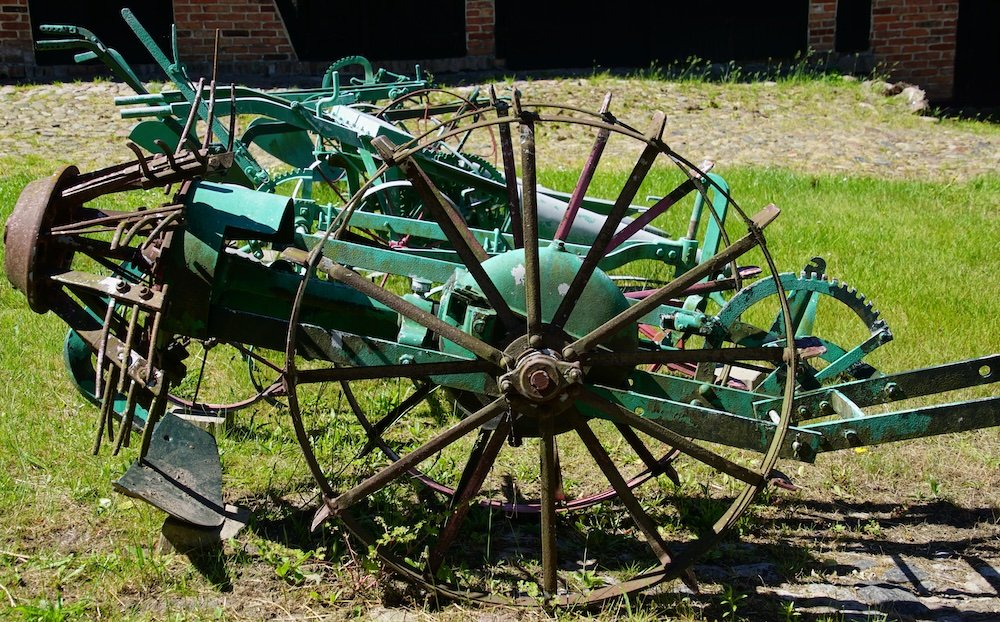
2) Explore Göhren’s Local Museums
In Göhren, history buffs will love poking around the modest local museums that celebrate rustic traditions. Inside, you’ll find exhibits of traditional farming equipment, horse-drawn carriage gear, and vintage kitchenware that once stocked old rural homes. Wooden plows, worn harnesses, and antique stoves transport you back to a simpler era. Curators often stand ready to share anecdotes, from how farmland was tilled to the secret family recipes that once simmered on cast-iron pots. Kids may delight in the interactive corners, where they can pretend to steer a wagon or grind grain by hand. The museum vibe is down-to-earth, reflecting the region’s deep agricultural roots.
- Some displays rotate throughout the year, ensuring fresh glimpses into rural crafts.
- Check if a guide offers short tours—extra details can enhance your visit.
- A small shop might sell local handicrafts or preserves as souvenirs.
Tip: Don’t skip the open-air section if available—it shows bigger artifacts like old tractors in their original environment.
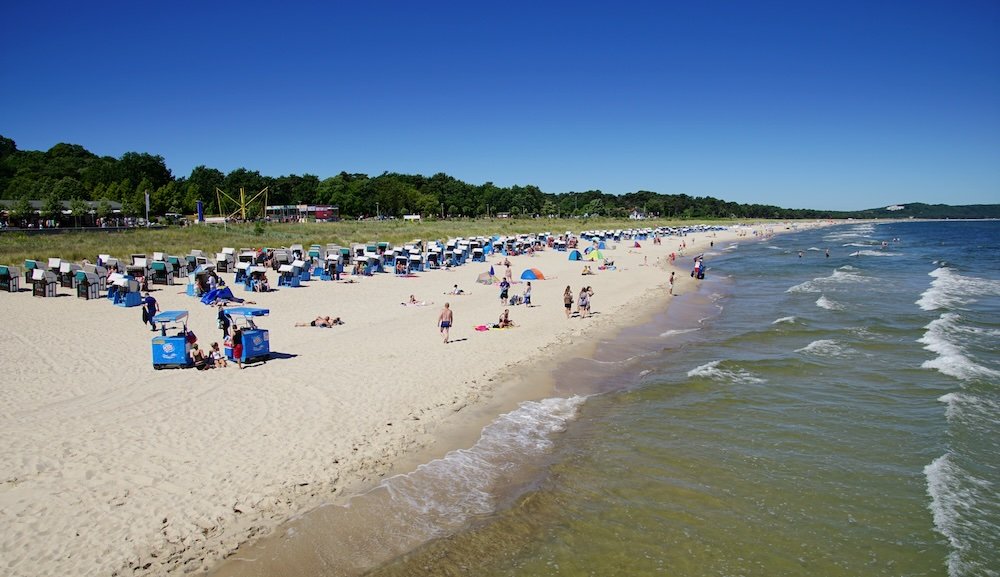
3) Relax at North Beach
North Beach is a sunbather’s haven where hundreds flock to tan, swim, and unwind. Its broad shoreline accommodates big crowds, yet the atmosphere remains leisurely. On warm days, families set up umbrellas, and kids dash for the water with squeals of joy. Strolling vendors peddle chilled drinks or ice cream, adding to that carefree holiday vibe. As the sun sets, pastel hues stretch over the Baltic Sea, painting a mesmerizing spectacle. Whether you’re a sun-worshipper or a casual beachcomber, North Beach’s gentle waves and powdery sand beckon.
- Lifeguards patrol in peak season, ensuring safe swims.
- Small cafés dot the boardwalk, serving quick bites or cold beers.
- Beach sports like volleyball or paddleball often pop up in designated areas.
Tip: Arrive earlier if you want front-row space near the water—by midday, prime spots vanish fast.
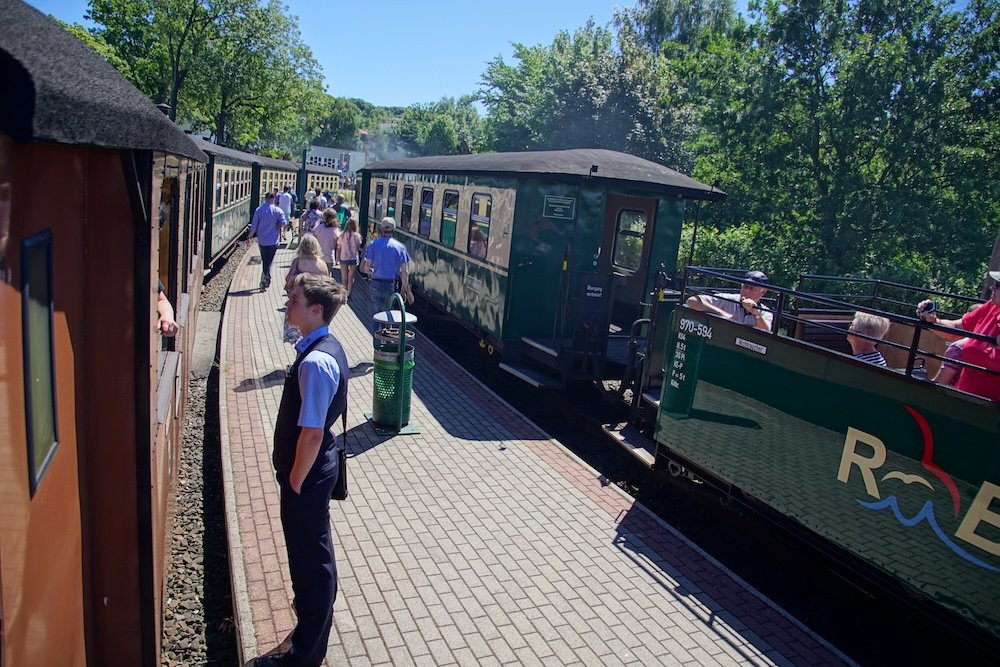
4) Board the Roland Racer Steam Train
Climbing aboard the Roland Racer—an old steam engine (though sometimes modernized) commuter train—feels like stepping into Rugen’s nostalgic past. The train puffs through scenic towns, thick forests, and patchwork farmlands, bridging each magical corner of the island. Riders sometimes lean out (safely) to catch the breeze and photograph chugging smoke. Station stops might be brief, letting passengers hop off to explore small villages. Inside the carriages, vintage-style seats and wooden fittings exude old-world charm. It’s not just transport; it’s a piece of living history that kids and grandparents can enjoy together.
- Ticket prices vary for short hops or full routes—check local timetables.
- Some days see special “themed” rides, adding festive flair.
- Schedules can shift in off-season, so confirm running dates in winter.
Tip: Pack a snack or thermos of coffee—the train lacks a full dining car, but nothing stops you from munching while gazing out the window.
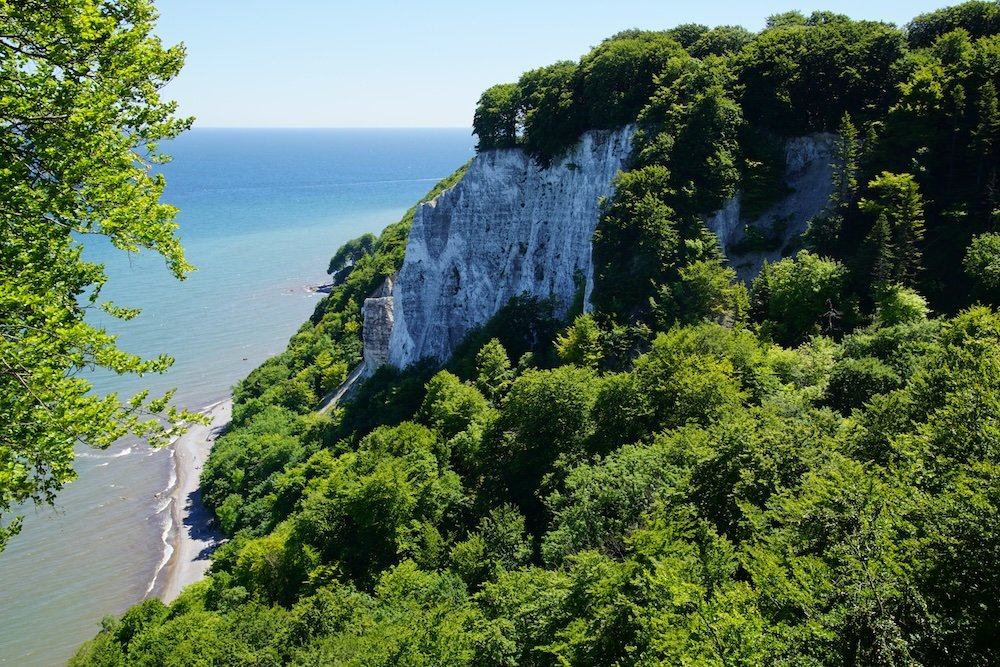
5) Marvel at Jasmund’s Chalk Cliffs
No Rugen Island travel guide is complete without praising Jasmund National Park’s stunning chalk cliffs. These towering white formations loom over teal waters, forming postcard-perfect backdrops for photos. At the visitor center, you’ll learn about their geology and how constant erosion shapes the cliffs anew each year. Trails meander along the cliff edge, offering panoramic views of sea and sky that shift with the light. Early morning or late afternoon yields the best photo ops, with fewer crowds. The hush of the wind and the stark chalk contrast fosters a sense of awe.
- Sturdy footwear is essential; some paths can be slippery with loose gravel.
- Respect safety barriers—crumbled chalk edges pose real hazards.
- The famous Königsstuhl (King’s Chair) vantage point might require a small entrance fee.
Tip: Try a guided hike if you love facts—rangers often share neat tidbits about local flora, fauna, and mythic legends of the cliffs.
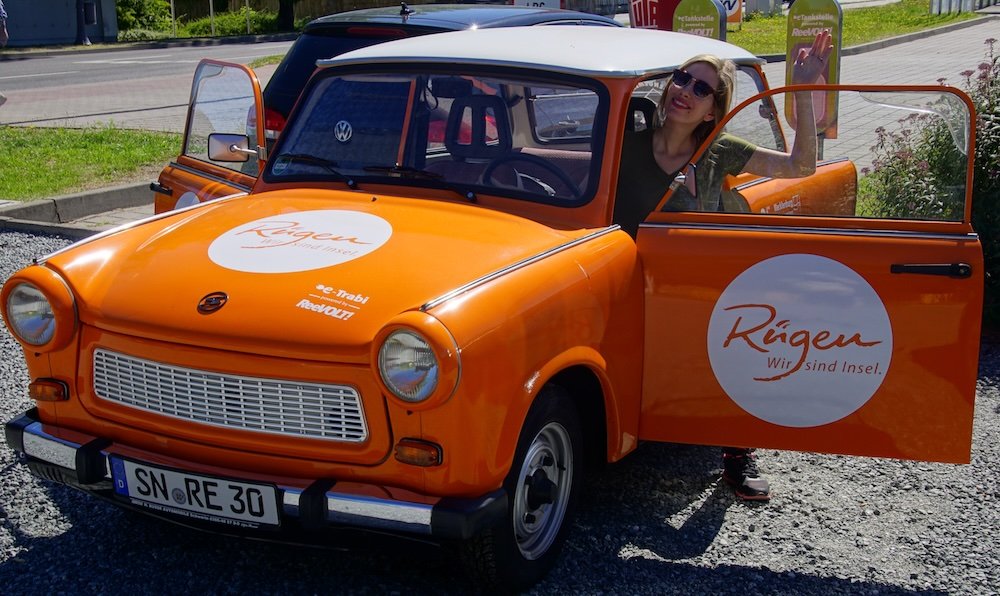
6) Take an E-Trabi Tour
Imagine zipping around in a quirky E-Trabi—an electric version of East Germany’s classic Trabant car. On Rugen, certain tour operators let you hop behind the wheel or ride along, feeling retro vibes with a modern eco twist. The engine hum is minimal, letting you better hear the rural breeze rustling farmland. Painted in playful colors, these vehicles turn heads wherever they go. A guide leads the way, ensuring you don’t get lost on winding backroads. It’s a memorable spin through countryside villages, bridging old-school style and new technology.
- Some tours include pit stops at viewpoints or local diners.
- Bring a valid driver’s license if you plan to drive—strict policies apply.
- Dress for the weather—Trabis aren’t known for robust air-conditioning.
Tip: Book early in peak season, as limited E-Trabis can sell out quickly.
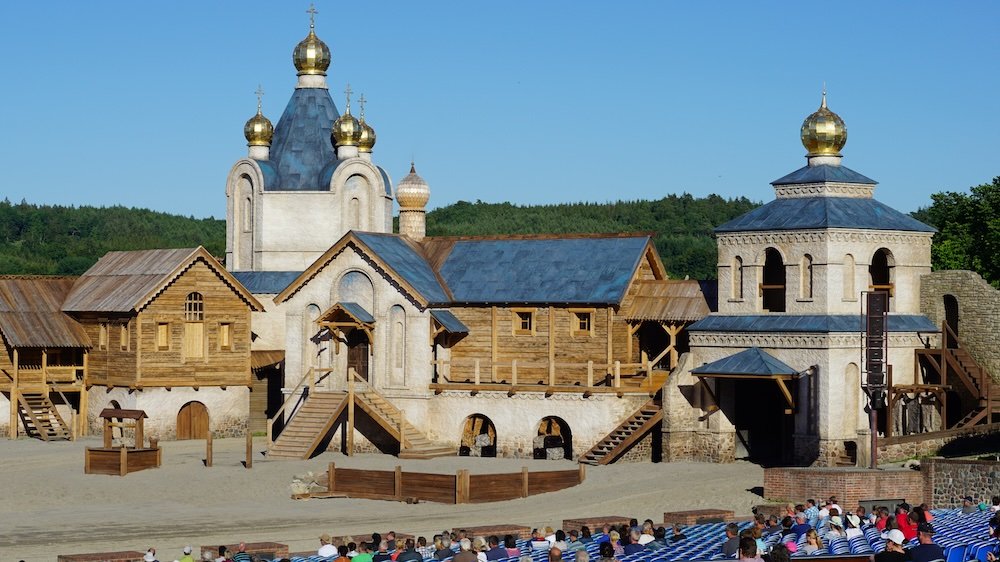
7) Experience Störtebeker Festspiele (Medieval German Theatre)
The Störtebeker Festspiele is an open-air theatre event, re-enacting the saga of Klaus Störtebeker—a legendary German pirate—on an epic scale. Performed at Ralswiek, the show fuses sword fights, pyrotechnics, and cavalry stunts. Spectators watch from massive stands, enthralled as costumed actors stride across a lakeside stage. The atmosphere is half-fairytale, half-historical fantasy. Fireworks cap many performances, leaving kids wide-eyed and grown-ups entertained. Even if you’re not fluent in German, the visuals and music deliver a thrilling spectacle.
- Arrive early to snag good seats—some shows fill fast.
- Bring a light jacket; evenings can turn chilly near the water.
- Programs or souvenirs, though optional, help you follow the storyline.
Tip: Check the official schedule for English summaries or special discount nights—makes it easier if you’re a non-German speaker.
8) Stroll Cape Arkona’s Cliffs
Cape Arkona sits at Rugen’s northern tip, boasting dramatic cliffs and two distinct lighthouses. The area brims with history: remnants of old Slavic fortresses, a charming fishing village, and weather-beaten coastline. You can walk from the parking area along a scenic path, scanning Baltic waves and scanning for seabirds overhead. The old naval bunkers are open for guided tours if you fancy Cold War anecdotes. Photographers love capturing the lighthouses at sunrise or sunset, painting them in soft pastel glow. Whether you climb the tower steps or linger along the cliff trail, Cape Arkona blends nature and history seamlessly.
- Some local cafés offer fish sandwiches—perfect for a quick lunch with sea views.
- The second, smaller lighthouse often feels less crowded but equally picturesque.
- Biking is popular here—paths are well-marked if you prefer two wheels.
Tip: Pack a windbreaker—the exposed coastline can be gusty even on sunny days.
9) Visit Sellin Pier (Seebrücke Sellin)
Sellin Pier is a classic seaside icon, featuring a long wooden walkway leading to a charming pavilion over the water. Approaching it feels like stepping into a vintage German postcard. The beach around it bustles in summer, with vibrant umbrellas and kids frolicking in shallow waves. At the pier’s end, you find a restaurant or café, letting you dine while literally hovering above the Baltic. During off-peak times, the place grows quieter, and you can savor the gentle ocean lull. Colorful beach chairs, known as Strandkörbe, line the sand—an idyllic vantage for lazy afternoons.
- Some evenings see events or music nights at the pier’s pavilion.
- Look for local ice cream stalls near the pier entrance.
- Early mornings yield peaceful sunrises if you don’t mind a crisp breeze.
Tip: Climb down to the lower deck for a unique perspective of waves lapping the pier foundations—makes for great photos.
10) Discover Binz Seaside Town
Binz is a stylish resort town with pastel-hued villas, a lovely promenade, and a wide sandy beach perfect for swimmers and sunbathers. Its spa architecture reveals turn-of-the-century elegance, reminiscent of an era when seaside cures were all the rage. The main boardwalk brims with cafés, boutiques, and families licking ice cream cones on summer afternoons. Take a moment to explore side streets for hidden parks or older fisherman houses. The atmosphere feels leisurely, urging you to slow your pace, maybe pick up a local waffle or fish roll. Sunset watchers gather on the beach, cameras ready to capture silhouettes of old villas against a blazing sky.
- Some local shops sell unique postcards or maritime trinkets as souvenirs.
- Binz can get busy in peak summer—consider shoulder seasons if crowds aren’t your thing.
- Watersports like paddleboarding or kayaking are popular rentals.
Tip: Check for spa and wellness deals—Binz’s resort heritage offers relaxing treatments if you want a pampering break.
What To Eat and Drink on Rugen Island, Germany
Coastal Cuisine & Rustic Delights
Rugen Island’s food scene draws heavily from its maritime surroundings and rural farmland. You’ll spot fish on almost every menu: herring, cod, or mackerel, often served fresh off local boats. Smoked fish stands by the harbors remain a go-to for quick bites. Meanwhile, farmland influences bring hearty breads, potatoes, and seasonal veggies to the table. Rote Grütze, a mixed berry dessert, appears in summer months, while warming stews might anchor cooler seasons. The flavors are simple but comforting, reflecting Rugen’s quiet charm.
Fishing and Seafood
Seafood plays a starring role here. Herring is particularly beloved—pickled, smoked, or fried, it’s a local staple. Crisp fish fillets often come with tangy sauces or a side of creamy potato salad. In fancier spots, you might see cod or flounder fillets in buttery lemon sauces. Even more laid-back stands serve fish sandwiches, ideal for beach picnics or midday munchies. If you’re a seafood lover, Rugen is your paradise.
- Try a smoked fish variety—aromatic, tender, perfect with fresh bread.
- Some local markets let you watch fish being prepared or filleted.
- Pair fish with local white wines if you fancy a refined lunch.
Hearty Landfare
Aside from the sea, farmland produce shapes many dishes. Bread is big here, especially those dense, crusty loaves we mentioned. Potatoes, grown in local soils, come mashed, roasted, or in thick soups. Meat options might include roast pork or sausages, served with cabbage or gravy. In cooler months, rich stews or casseroles offer cozy comfort. So if you need a break from fish, these hearty plates await.
- Some cafes do daily specials with local produce—ask staff for details.
- German sausages in Rugen might differ from southern styles—slightly milder spice.
- Bread dumplings or spätzle occasionally appear, though not as common as in southern Germany.
Sweet Treats & Desserts
You can’t leave Rugen without indulging in sweet corners. Bakeries stock apple strudel, fruit tarts, and cinnamon-laced pastries. In summer, look for Rote Grütze—tangy berry pudding drizzled with vanilla sauce. Some restaurants adopt modern twists, pairing seasonal fruit compotes with local ice cream. Crisp waffles with whipped cream might also appear, especially in tourist-friendly spots. Savor these after a beach day for the ultimate sugar-lift.
- If you spot a festival or fair, check for donut-like pastries or local sweet buns.
- Fruit stands might sell fresh berries or orchard goodies in late summer.
- Bakeries often open early, letting you grab a sweet treat for breakfast or brunch.
Beverages & Local Drinks
German beer rules the roost: refreshing pilsners, wheat beers, or occasional dark brews. Pairing a light lager with fresh fish is a local tradition. Wine is less typical, but some restaurants carry German whites—like Riesling or Silvaner—that complement fish or mild cheeses. Meanwhile, Apfelschorle (apple juice mixed with sparkling water) offers a non-alcoholic thirst-quencher. Coffee culture also thrives in smaller towns, fueling mid-afternoon breaks.
- If you prefer stronger spirits, try local schnapps, often fruit-based.
- Some artisan breweries on the island might produce craft beers—worth a sample.
- Hot cocoa or spiced tea soothes chilly evenings on windy coasts.
Dining Tips
- Bold Tip: Ask about daily catches or seasonal specials—restaurants change menus based on fresh supply.
- Many places only take cash, especially in smaller villages, so carry euros.
- Reserve spots in popular eateries during summer—it gets crowded quickly.
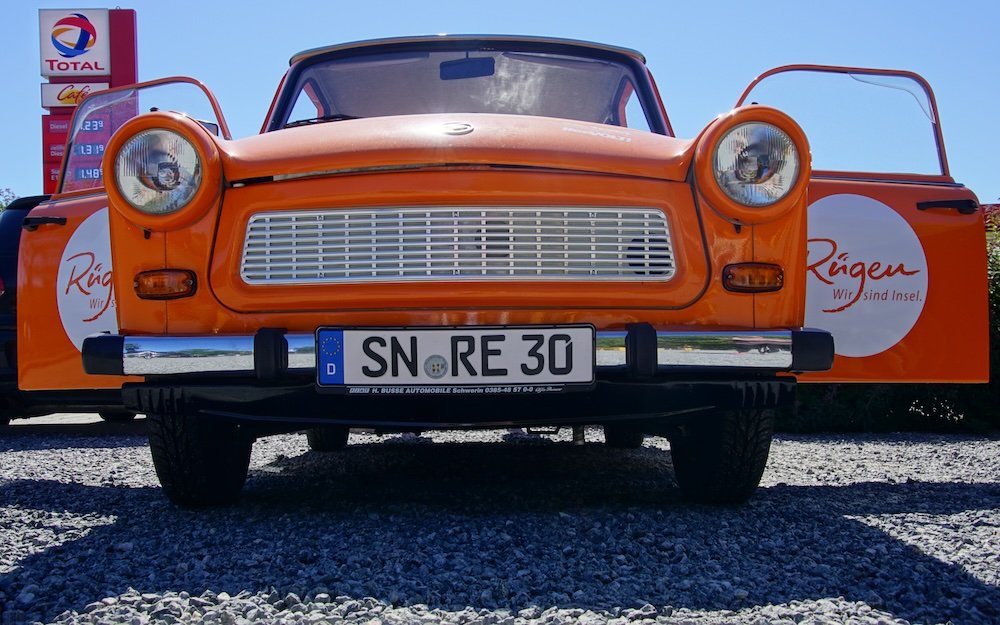
Tours For Visitors To Rugen Island, Germany
Why Take a Tour on Rugen?
Rugen’s sprawling coastlines, varied terrain, and storied past can be intimidating to approach solo. Tours offer curated routes, local insights, and easy logistics. Especially if you’re short on time or want deeper historical context, guided outings ensure you don’t miss key spots. Whether it’s scenic boat rides, heritage excursions, or nature walks, the island’s tours cater to varied tastes.
Boat Tours & Coastal Cruises
One popular way to see Rugen is by boat tour, often hugging chalky cliffs or visiting smaller islets. Guides detail geology, wildlife, and maritime legends along the route. You might pass lighthouses, hidden coves, and flocks of seabirds. Photographers relish vantage points only accessible by water. On calm days, the sea glitters under sunshine, making the trip extra tranquil. For a dash of adventure, some tours incorporate brief stops to explore remote beaches.
- Book early in summer—limited seats can vanish fast.
- Layer up; sea breezes can be chilly, even in warm months.
- If prone to seasickness, take precautions or choose shorter routes.
Tip: Compare morning vs. sunset cruises—sunset rides yield gorgeous pastel skies for photos.
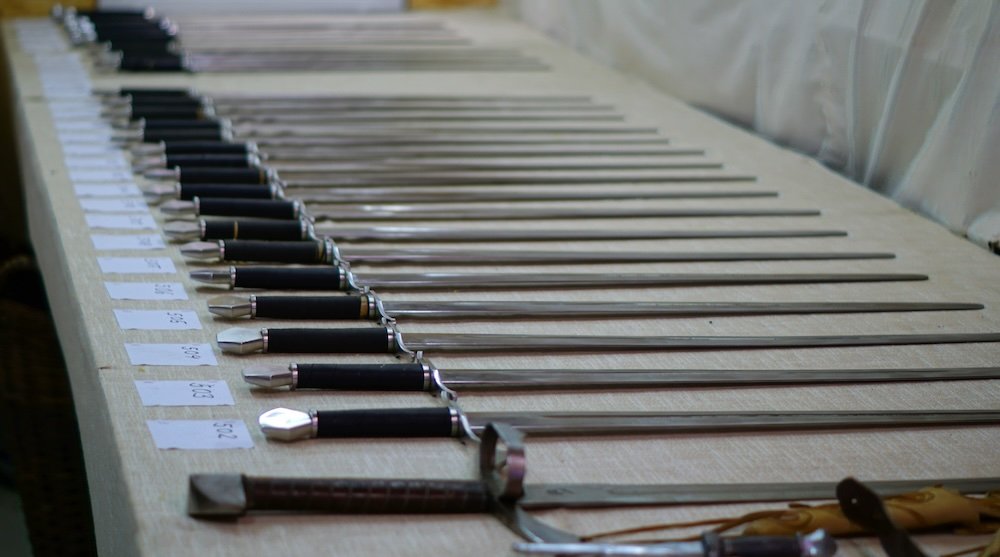
Historical & Cultural Excursions
Heritage tours dive into Rugen’s rural traditions or maritime past. Groups might visit a working farm to see cheese-making or an old fishing village to learn about net-mending techniques. Some routes feature museums (like the small local ones in Göhren), concluding with an in-depth look at old horse-drawn carts or historic tools. The Störtebeker Festspiele might be included in a combined package, so you enjoy both a scenic day outing and an evening show. These tours blend storytelling with real-world glimpses, bridging modern island life and centuries of local craft.
- Some guides speak multiple languages—check if English or other languages are offered.
- Group sizes vary—smaller tours feel more intimate.
- If you love interactive experiences, pick tours that encourage hands-on tasks.
Tip: Ask for hidden-gem stops—some guides will deviate if time allows, revealing lesser-known barns or chapels.
Nature & Wildlife Tours
Rugen’s countryside teems with bird species, especially near wetlands or coastal areas. Nature tours might bring you to vantage points in places like Jasmund National Park, where chalk cliffs meet thick forests. Birdwatchers can join specialized outings to spot migratory flocks or rare local species. Hikes typically stay moderate in difficulty, though some rocky sections exist. The guide often highlights local flora, from wildflowers to centuries-old oaks, weaving in ecology lessons. Perfect if you want to connect with Rugen’s quieter, untamed side.
- Dawn or dusk tours sometimes yield the best wildlife sightings.
- Wear durable shoes and possibly insect repellent in warmer months.
- Cameras with zoom lenses help capture shy birds or deer in the distance.
Tip: Pack water and snacks—nature tours can last half a day if you’re covering multiple habitats.
E-Trabi & Vintage Vehicle Tours
For a quirky experience, consider an E-Trabi or vintage car tour (like the Roland Racer references). Piloting an old-school (or modern electric) contraption through scenic roads is half the fun. You’ll probably follow a lead vehicle so you don’t get lost. Stops might include farmland viewpoints or tiny hamlets rarely seen by outsiders. The nostalgic flair draws travelers craving something beyond typical bus tours. Some operators even provide picnic baskets for a midday break by a meadow.
- Double-check driver’s license requirements—standard EU licenses usually suffice.
- Embrace slower speeds, letting you soak in farmland panoramas.
- Kids might love riding in these unique, colorful cars.
Tip: Charge your phone or camera—these tours provide endless photo ops with vintage flair.
Self-Guided vs. Guided
- Bold Tip: Consider mixing one guided day with self-exploration. That synergy offers local insight plus the freedom to wander at your pace.
- Self-guided options: rent a bike or car, using guidebooks or apps to shape your route.
- If you only have a weekend, group tours ensure you hit highlights efficiently.
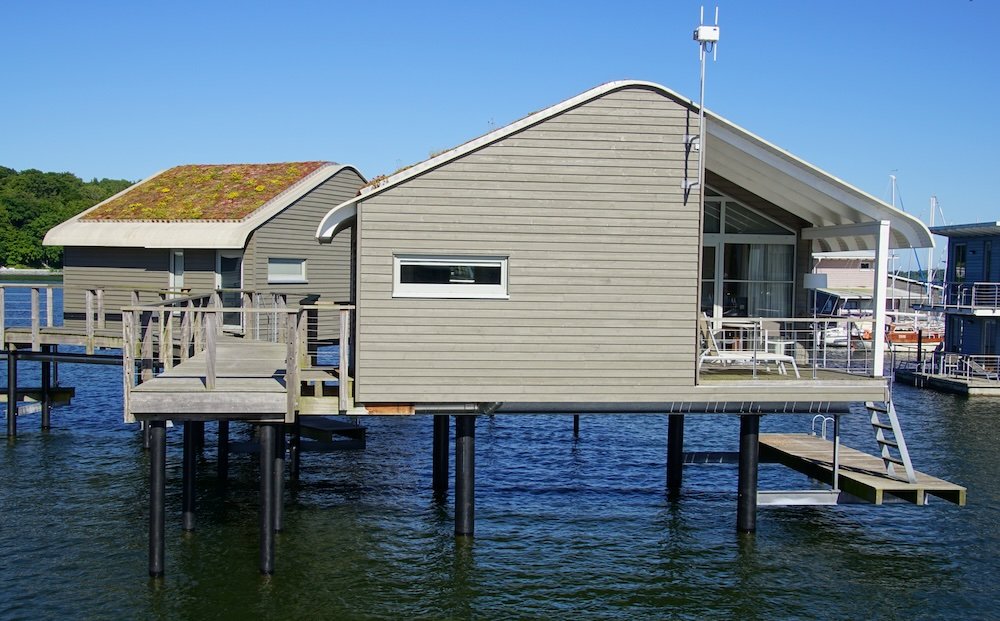
Rugen Island Accommodations Guide: Hotels, Guesthouses and Hostels
Cozy Stays for Every Budget
Rugen Island’s things to do might be endless, but at day’s end, you need a comfortable base. Whether you seek luxury near the beach or a budget-friendly hostel in a quiet village, Rugen offers variety. Expect seafront hotels with sweeping Baltic panoramas, family-run guesthouses in farmland settings, or modern hostels catering to backpackers. We’ll break down the lodging scene to help you pick the ideal spot.
Beachfront Resorts & Boutique Hotels
On Rugen, certain coastal towns—like Binz or Sellin—boast boutique hotels perched directly on the shore. These often come with spa facilities, private balconies, and on-site restaurants serving local seafood. Mornings might find you sipping coffee as gulls wheel overhead. The style can be upscale but not always sky-high in cost—off-peak times yield deals. If you crave top-tier pampering, scoping out a beach resort might be your jam.
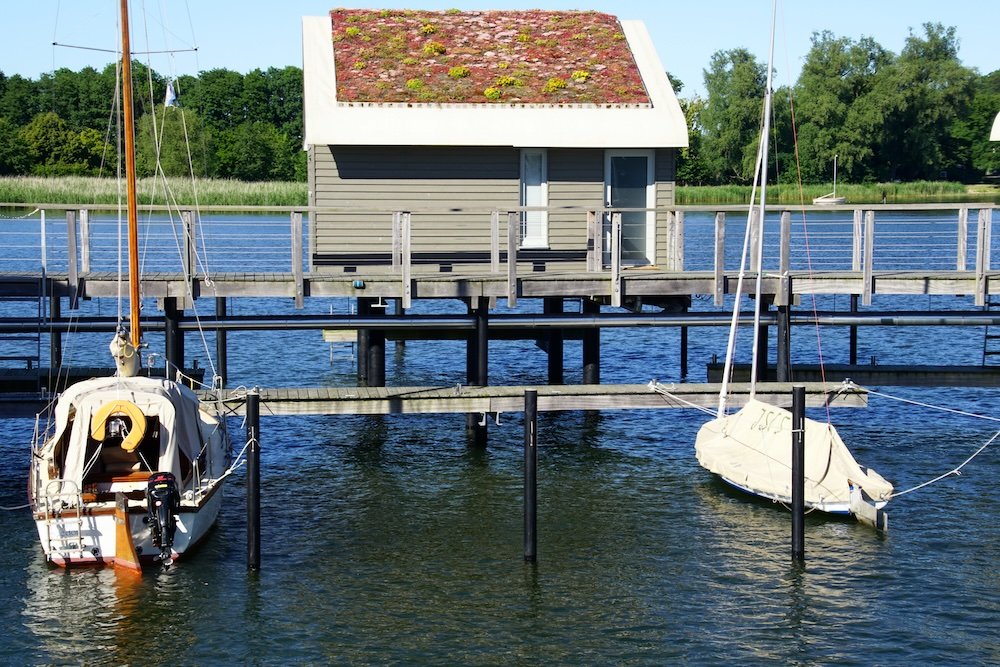
- Some boutique hotels provide beach access or rental beach chairs (Strandkörbe).
- Breakfast buffets typically include fresh bread, cheeses, and seasonal fruit.
- Book well in advance if you plan a high-season trip—rooms vanish quickly.
Tip: Check if the property offers on-site parking—coastal areas can have scarce street spots.
Guesthouses in Quaint Villages
Throughout Rugen’s inland or lesser-known coastal enclaves, you’ll find guesthouses exuding rustic warmth. Owners might greet you personally, offering a quick chat or local tips. Rooms vary from basic to quite charming, with farmland or garden views. Breakfast is often homestyle, featuring eggs from local hens or preserves from orchard fruit. If you appreciate authenticity over glitz, these quieter corners let you experience Rugen’s everyday life. Some spots even let kids feed farm animals or explore orchard trails.
- Ask about shared vs. private bathrooms—some old properties might have limited en-suites.
- Inquire if dinner is available—smaller guesthouses sometimes do communal meals.
- Many owners speak decent English or at least some for basic communication.
Tip: Read reviews carefully: small guesthouses differ widely in amenities, but that personal touch can outweigh any minor inconveniences.
Modern Hostels & Budget Options
Backpackers or budget travelers rejoice: Rugen has hostels, typically in bigger towns. Shared dorms offer cost savings, plus you might meet fellow adventurers to plan group outings. Some hostels have communal kitchens, lounge areas, or even a small bar. Perfect if you love a social vibe or short stays in multiple parts of the island. While they’re simpler than hotels, cleanliness and staff friendliness can be top-notch.
- Check if breakfast is included or a small extra fee.
- Lockers or secure storage help keep valuables safe.
- Some hostels rent out bikes or partner with local tour agencies for discounts.
Tip: Verify if the hostel allows late check-ins or has a curfew—small towns can go quiet early.
Family-Friendly Apartments
Families or groups might prefer apartment rentals for space and kitchen facilities. Cooking your own meals can save money, especially if kids are picky eaters. Many apartments stand near beaches, so you can roam the shoreline at will. Weekly rentals sometimes come at better rates than nightly bookings. You’ll enjoy a “home away from home” vibe with living rooms, multiple bedrooms, and that personal comfort absent in hotels.
- Some apartments have shared laundry—handy for longer stays.
- Inquire about linen or towel fees if not included.
- Balconies or terraces often provide scenic sunrise or evening relaxation.
Tip: Aim for apartments with easy public transport links if you won’t have a car—remote ones might leave you stuck.
Booking Strategy
- Bold Tip: Compare prices on multiple platforms—official tourism sites sometimes feature local-only deals not on big booking portals.
- Summer and holiday weekends see surging demand—reserve months ahead if possible.
- Off-peak (spring or fall) yields quieter ambiance and potential cost savings, plus mild weather for sightseeing.
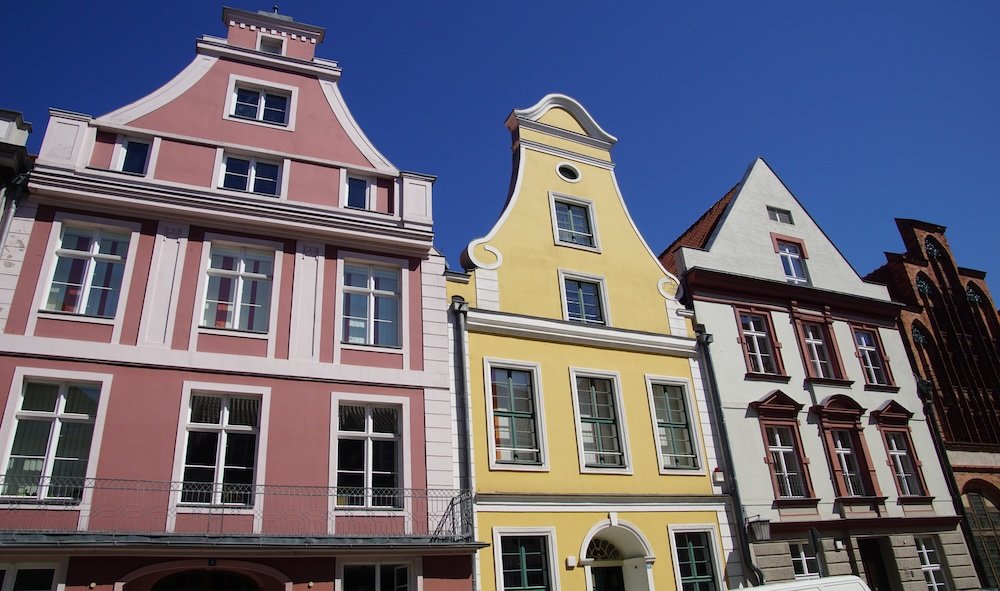
Day Trips From Rugen Island, Germany
Why Day Trips from Rugen?
Though Rugen brims with things to do, sometimes you yearn for a change of scenery. Mainland Germany or neighboring coasts offer further exploration. These day trips expand your vantage, from historic towns to scenic wonders. Let’s explore a few top picks that pair well with an extended Rugen stay.
1) Stralsund’s Historic Old Town
Just across the water from Rugen, Stralsund boasts UNESCO-protected architecture reflecting centuries of Hanseatic trade. Stroll the old market square, flanked by gabled brick buildings and a towering Rathaus (town hall). Maritime vibes run strong; you might pop into the German Maritime Museum for an undersea-themed experience. Cobbled lanes lead to cozy cafés where you can sample local pastries. If you love Gothic brick churches, you’ll find more than one to admire. The harbor area also offers breezy walks with Rugen visible on the horizon.
- A short ferry or car ride connects Rugen to Stralsund.
- The Ozeaneum aquarium is a family-friendly highlight.
- Shops sell maritime souvenirs: anchor-emblazoned T-shirts, sea salt chocolate, and more.
Tip: Time your visit so you can see the old town lit up at dusk—very romantic for an early dinner.
2) Rostock & Warnemünde Beach
Rostock, a bigger city on Germany’s Baltic coast, merges medieval spires with a lively student scene. You can roam the old town walls, spot towering churches, and taste fresh fish at harbor stalls. A short local train ride from Rostock leads to Warnemünde, a beloved seaside spot. There, a wide beach, a charming lighthouse, and pastel-hued houses attract crowds on sunny weekends. The vibe is busier than Rugen’s quieter shores, but that injection of energy can be fun for a day.
- Rostock’s pedestrian zone features shops for clothing, souvenirs, or local craft beer.
- Warnemünde’s fish market teems with grilled fish, pickled herring, or shrimp rolls.
- A climb up the Warnemünde Lighthouse yields sweeping sea and town views.
Tip: Check for festivals—Rostock’s Hanse Sail in August fills the harbor with tall ships.
3) Lübeck’s Marzipan & Hanseatic Heritage
A couple of hours southwest lies Lübeck, famed for medieval ambiance and delicious marzipan treats. The Holstentor gate stands as its iconic entrance, hinting at a fairy-tale aesthetic within. Cobblestone alleys lead to Gothic churches, quaint courtyards, and pastry shops brimming with marzipan figurines. Wander through narrow passages, gleaning how Hanseatic trade shaped the city’s wealth. If you’re a fan of sweet confections, visiting the Niederegger café is a must. Sipping coffee while nibbling marzipan cake near centuries-old bricks is pure delight.
- Train rides from Rugen might require transfers but remain straightforward.
- Lübeck’s museum scene covers maritime history, literature, and more.
- If you have time, consider a guided walking tour for deeper insight.
Tip: Sample different marzipan flavors—classic, chocolate-coated, or fruit-infused—for a sweet memory.
4) Hiddensee Island
If you still crave island vibes, Hiddensee is a smaller, car-free isle off Rugen’s coast. Ferries connect them, carrying day-trippers seeking tranquility. Beaches, dunes, and wild grasses define Hiddensee’s quiet appeal. Biking or walking is the main mode of exploration—no cars allowed. A few villages host modest cafés, art studios, or tiny shops. If you love solitude, starlit skies, and unspoiled shores, Hiddensee is your dream escape.
- Ferries typically depart from Schaprode or other Rugen ports.
- Bring a picnic—food options can be limited.
- Summer sees a mild crowd, but the vibe remains laid-back.
Tip: Rent a bike on arrival—Hiddensee’s paths are perfect for leisurely pedal-powered adventures.
5) Peenemünde Historical Site
Back on the mainland, Peenemünde stands known for WWII-era rocket development. The museum covers how pioneering technology and war-time research intersected. Exhibits can be sobering, detailing rocket engineering that shaped post-war space programs. You can also explore an old submarine moored as a museum. Though not a lighthearted trip, it offers a historical dimension near Rugen. Those curious about scientific or military past might find it fascinating.
- Buses or car rides from Rugen might take around an hour or more.
- The area includes a harbor scene with industrial vibes.
- Museum signage in German, but some English translations exist.
Tip: Plan an early start—reading all exhibits can consume a full day if you delve deep.
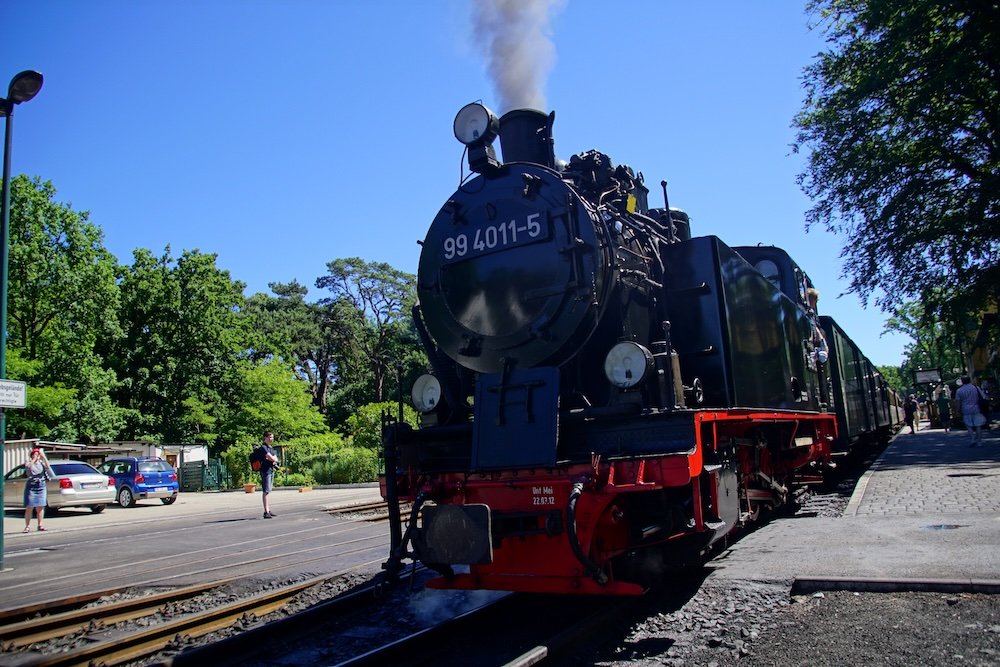
Rugen Island Transportation Guide
Arriving on Rugen
Getting to Rugen Island is half the fun. Visitors can drive via bridges connecting to the mainland, or take trains from cities like Stralsund or Berlin. If you prefer flights, the nearest major airports are in Rostock or Hamburg, then you continue by train or car. Some buses also run from German hubs, offering direct routes. Either way, planning a bit helps you avoid peak-hour congestion on the roads or crowded trains. Once you arrive, the island’s broad network of local buses, scenic trains, and ferry links awaits.
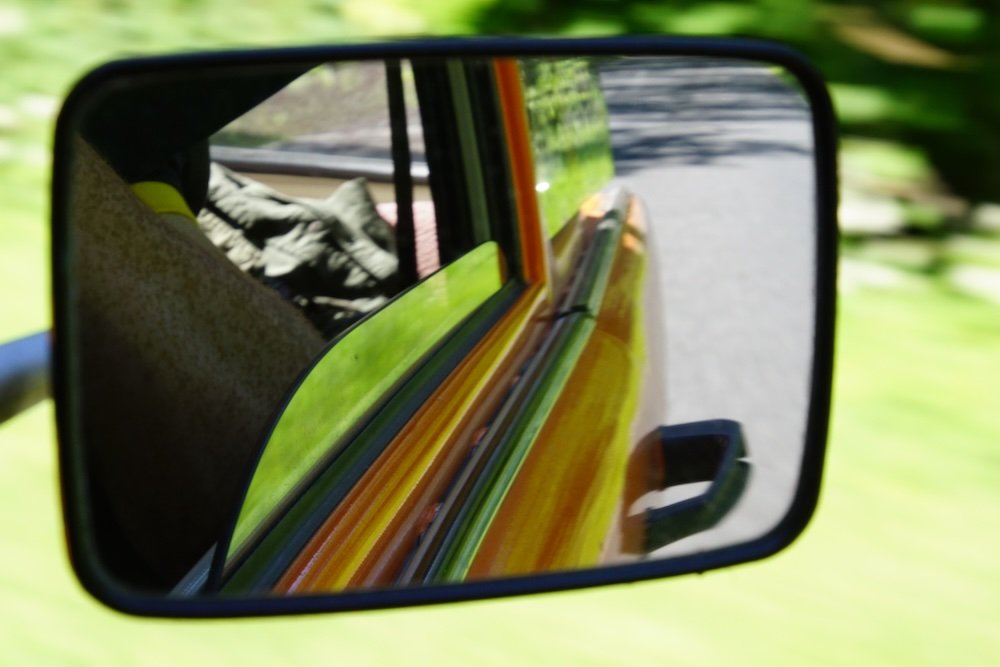
Getting Around by Car
Driving is popular, letting you roam at your own pace. Roads are generally good, though narrower in rural sections, so watch your speed. In peak summer, traffic near major towns can build, so consider off-peak times for day trips. Parking can be free in smaller villages but paid or limited near beaches, especially in Binz or Sellin. Keep euros on hand for meters. If you love exploring hidden spots or want easy gear transport (like bikes or beach gear), a car is ideal.
- Check rental companies for deals in Stralsund or main German cities if you arrive by train.
- Gas stations are scattered across the island—fill up before remote drives.
- GPS helps, but watch for local signs; some scenic detours aren’t well-marked digitally.
Tip: Avoid midday arrival on weekends—bridge bottlenecks can cost you an hour or more in queue.
Using Public Transport
Buses crisscross Rugen, linking towns and tourist spots. They’re reliable though not super frequent. Timetables differ weekdays vs. weekends, so confirm your return. The “Rügener Personennahverkehr (RPNV)” site or local info boards provide schedules. Fares are reasonable; drivers usually sell tickets, but exact change helps. For those without a car, buses suffice for major routes, though you might wait between connections.
- Some bus lines serve beaches more often in summer, targeting tourism.
- Off-season timetables can drop drastically, so plan carefully in winter.
- Certain bus passes allow unlimited daily rides—check if it suits your itinerary.
Tip: Grab a route map at tourist offices—visually seeing lines clarifies how to chain multiple stops in one day.
The Scenic Train (Rasender Roland)
Rugen’s famed Rasender Roland steam train (sometimes called the Roland Racer) is both nostalgic transport and tourist attraction. It links key southeast towns like Putbus, Binz, and Göhren. The locomotive chugs along at a relaxed pace, offering farmland vistas and the hiss of steam. Locals and tourists alike hop on for short journeys or extended rides. Tickets vary by distance, with day passes if you plan multiple segments. It’s a memorable way to travel, bridging old-world charm with modern convenience.
- Schedules might vary by season; check morning vs. afternoon frequencies.
- If you’re a train buff, consider a round-trip for pure enjoyment.
- The open windows can let in soot or cinders—wear sunglasses if in the front cars.
Tip: Stand near an open window (safely) to snap pictures of farmland rolling by—just watch for soot and hang on tight.
Biking and Walking
Rugen’s relatively flat terrain suits biking. Marked bike trails weave through farmland, forests, and coastlines. Rentals exist in bigger towns, from standard bikes to e-bikes. Stopping whenever you please—for a cliff view or hidden café—feels liberating. Meanwhile, short distances between villages mean you can walk or hike certain routes if you’re feeling active.
- Some accommodations lend bikes or have partnerships with local shops.
- Helmets aren’t legally required but strongly recommended for safety.
- Off main roads, traffic eases, letting you pedal in peace.
Tip: Pack water and a light snack—rural stretches might lack convenience stores for miles.
Ferries
For travelers eyeing smaller islets or crossing certain water channels, ferries handle the job. Timetables can vary by season, so confirm in advance. Some ferries allow cars, while others are passenger-only. The ride itself is scenic, letting you glimpse Rugen’s coastline from the water. An easy extension if you want more maritime flavor.
- Weather can alter ferry operations—storms or high winds cause cancellations.
- Lines can be long in summer if you’re bringing a car.
- Grab a seat on the upper deck for fresh air and sea breezes.
Tip: Check if your planned day trips require ferry reservations—some are first-come, first-served, while others might require booking.
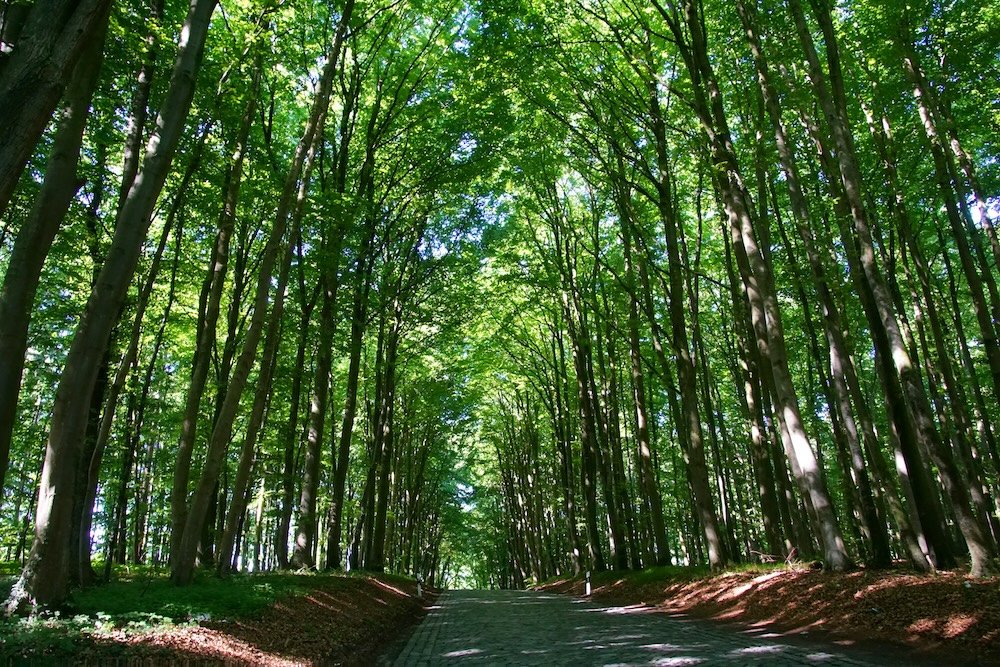
Rugen Island Travel Guide: Conclusion
Rugen Island encapsulates a slice of Germany many overlook, overshadowed by big-name cities like Berlin or Munich. Yet those who venture here discover things to do that rival the best coastal retreats or countryside escapes in Europe. Chalk cliffs tower elegantly, beaches sprawl with gentle Baltic waves, and farmland culture seeps through in everyday life. You’ll munch fresh bread, admire old steam trains, watch swans glide near piers, and feel the hush of farmland at dusk.
Embracing Rugen’s Pace
Life on Rugen seems to run a bit slower. Mornings beckon you to local bakeries for piping-hot bread, while afternoons invite casual strolls along scenic trails. Evenings might be spent at a small harbor café, where fishermen swap tales. This gentle tempo offers a chance to unwind from frantic city hustle. It’s an island that encourages “less is more”—savor fewer stops but do them deeply, rather than rush checklists.
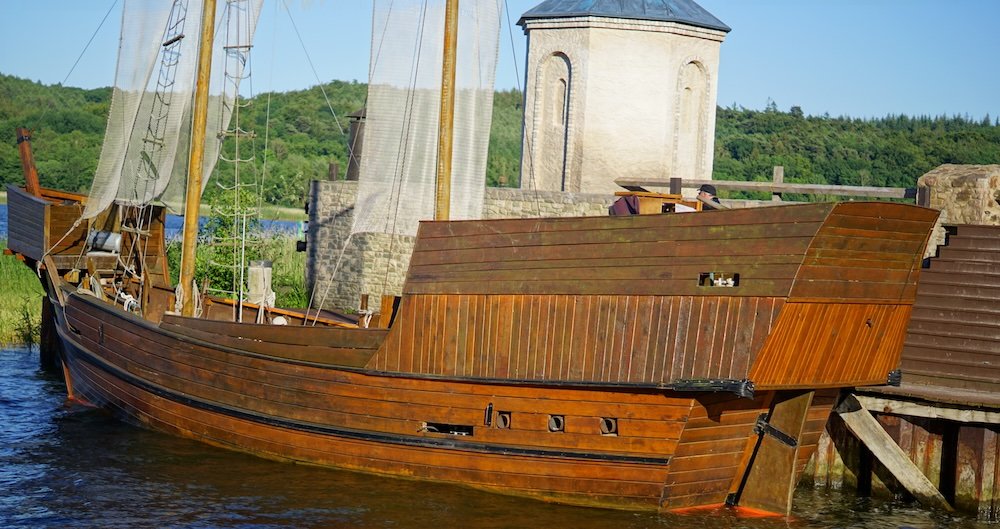
Cultural Layers & Activities
From the Störtebeker Festspiele that dramatize pirate legends to small museums detailing local crafts, Rugen’s culture is tangible. The chalky vistas of Jasmund National Park are a visual feast. Biking old village roads or riding the Rasender Roland train fosters direct contact with the land’s heritage. Meanwhile, the coastline teems with watery recreation—swimming, sailing, or simple beach lazing. Whether you love historical deep-dives or open-air adventures, you’ll find a niche here.
Culinary Comforts
We can’t overlook the island’s food scene. Fresh fish anchors many menus: smoked, fried, or pickled. Farm produce, thick bread, and hearty stews complement cooler seasons. Summertime might call for smoked fish sandwiches or berry desserts, while winter leans toward warming soups. The synergy between sea and farmland ensures variety. And don’t forget local beers or schnapps for that finishing flourish.
Final Thoughts
In essence, Rugen Island begs you to breathe deeply and roam widely. Let the island’s calm rhythms guide you toward real rest, real exploration.
